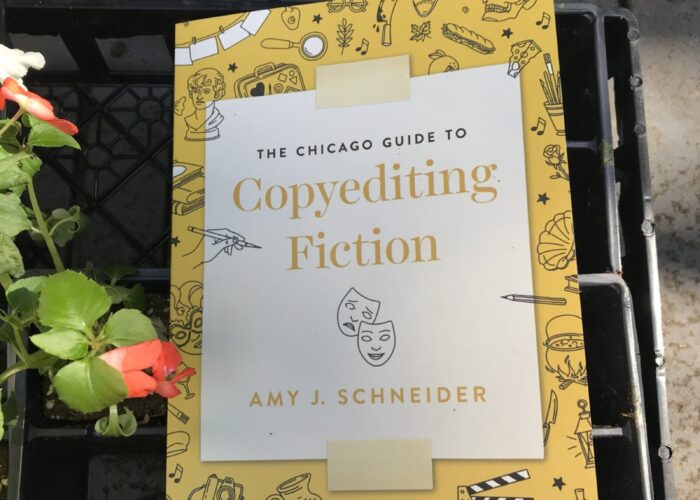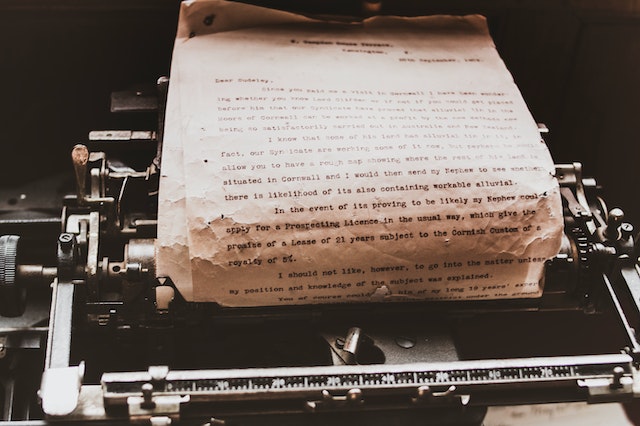When The Chicago Guide to Copyediting Fiction by Amy J. Schneider was published this spring, I grabbed a copy as soon as possible. This book came out just as I have been expanding my translation business to provide copyediting services for fiction in translation, and it has turned out to be a very valuable resource. As Schneider points out, The Chicago Manual of Style remains a gold standard for editors (it’s so iconic it even has its own website!). But it doesn’t have much to say about things that are specific to fiction. Her book fills in those gaps. Here are some highlights from the book, along with my thoughts on issues that are especially pertinent to copyediting translated fiction.
Dialogue
The CGCF offers a thorough discussion of copyediting dialogue and does a great job identifying potential problems. For instance, if dialogue tags (such as “she said” or “he asked”) do not appear frequently enough, readers may be confused as to who is speaking. In my experience, this is often an issue when copyediting translated fiction. English-language readers expect dialogue tags, but authors writing in other languages may use them only rarely. If the source-language author originally used dashes to indicate speech instead of quotation marks, there may be no dialogue tags at all! If this will be problematic for the English-language reader, the copyeditor should suggest adding them.
The Comma Splice
Fiction operates differently than non-fiction, and the rules of grammar may sometimes be ignored. For instance, comma splices are generally okay in dialogue, because they reflect how people talk. Even in narration, the CGCF advises that comma splices can be used to create pacing or establish voice.
In terms of copyediting translated fiction, I’ll add that a comma splice is not considered grammatically incorrect in all languages. But when adapting source language syntax into English, the translator should generally rewrite comma splices. (The author is following the rules of the source language, but the translator needs to follow the rules of English.) One solution is to split the sentence in two. You can also replace the comma with a semi-colon, though this may come off as old-fashioned or stilted. I often like to use an em-dash, which gives the English sentence some of the same energy and flow as the original.
When copyediting fiction in translation, my advice is to correct comma splices if there are a few of them (which have probably slipped into the English translation accidentally). However, if they crop up frequently, it is likely that the translator has chosen to retain them as an important element of the author’s style (especially in literary fiction). In this case, the copyeditor should check with the project manager or translator to make sure this is an intentional approach.
Logical Descriptions
The CGCF examines the copyeditor’s role in making sure that the book’s descriptions make sense. Even a fantasy world where the laws of physics are different needs to be consistent! In translated fiction, there are two levels at which lack of clarity can crop up: occurring in the original or introduced in the translation. If there is interference from the source language, the translator may have written something in English that is unclear. For instance, in a novel I copyedited that was translated from Italian, the translator used the word iron to describe an object used to threaten someone. When I queried, it turned out that this was a gun, but the word iron didn’t work as a literal translation.
Style Sheets and More
In this post, I’ve only scratched the surface of all The Chicago Guide to Copyediting Fiction has to offer. Other chapters cover workflow, creating style sheets, inclusive language, and resources. Schneider also discusses working with indie authors who don’t have a big publishing house behind them. It’s an extremely useful guide that all copyeditors of fiction will want to have on their desks.
The book emphasizes that the copyeditor should not have a prescriptive mindset (“It’s not your book!”), but should focus on asking questions for clarity in a collaborative spirit. When copyediting fiction in translation, the process may be more complicated: a query to the translator may have to be relayed to the author. But ultimately, the goal is the same: to check for consistency, clarity, and logic in the writing. As Amy J. Schneider puts it, “When you copyedit fiction, you are not only helping the author get their work into the best possible shape but also helping the reader remain immersed in the story.”
Top photo by Kate Deimling; other photos by Cup of Couple, Dominika Roseclay, Monstera, and Pixabay via Pexels.





